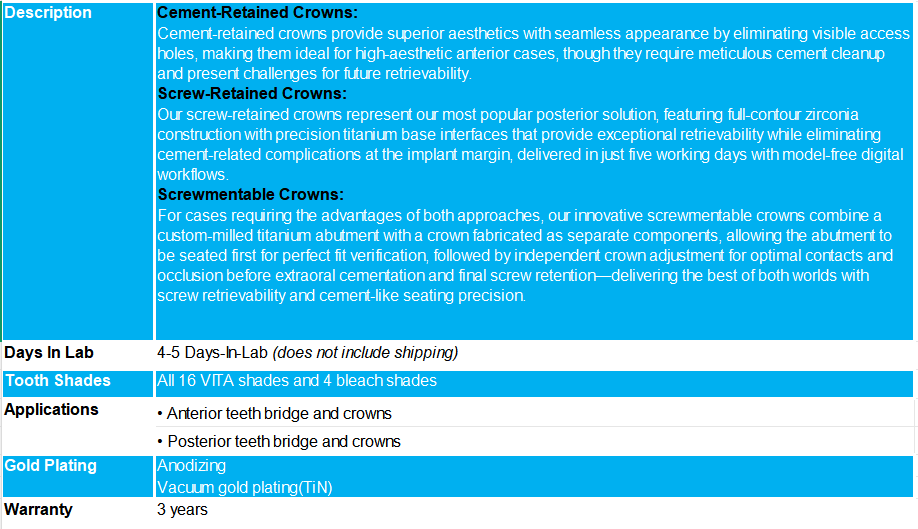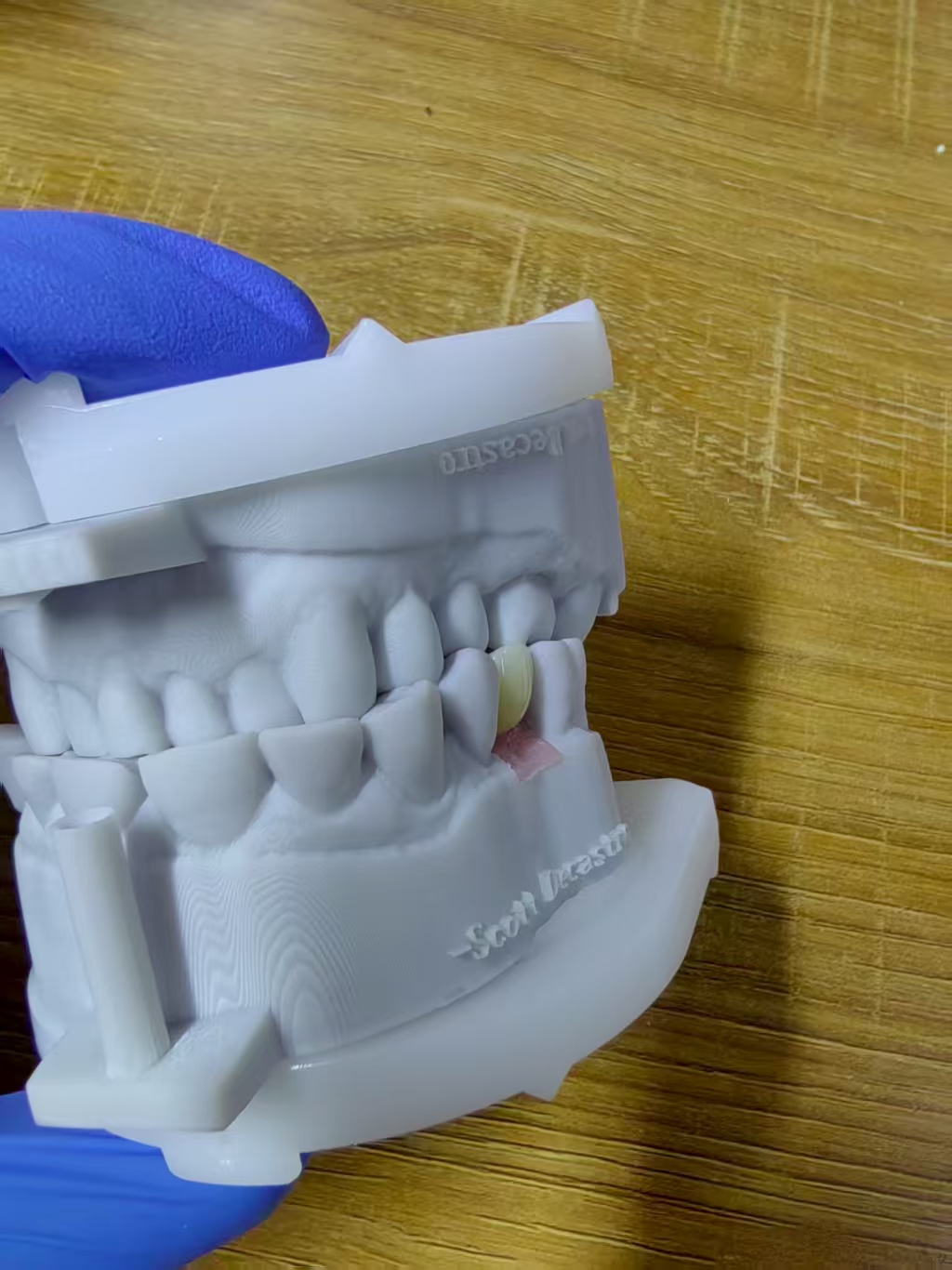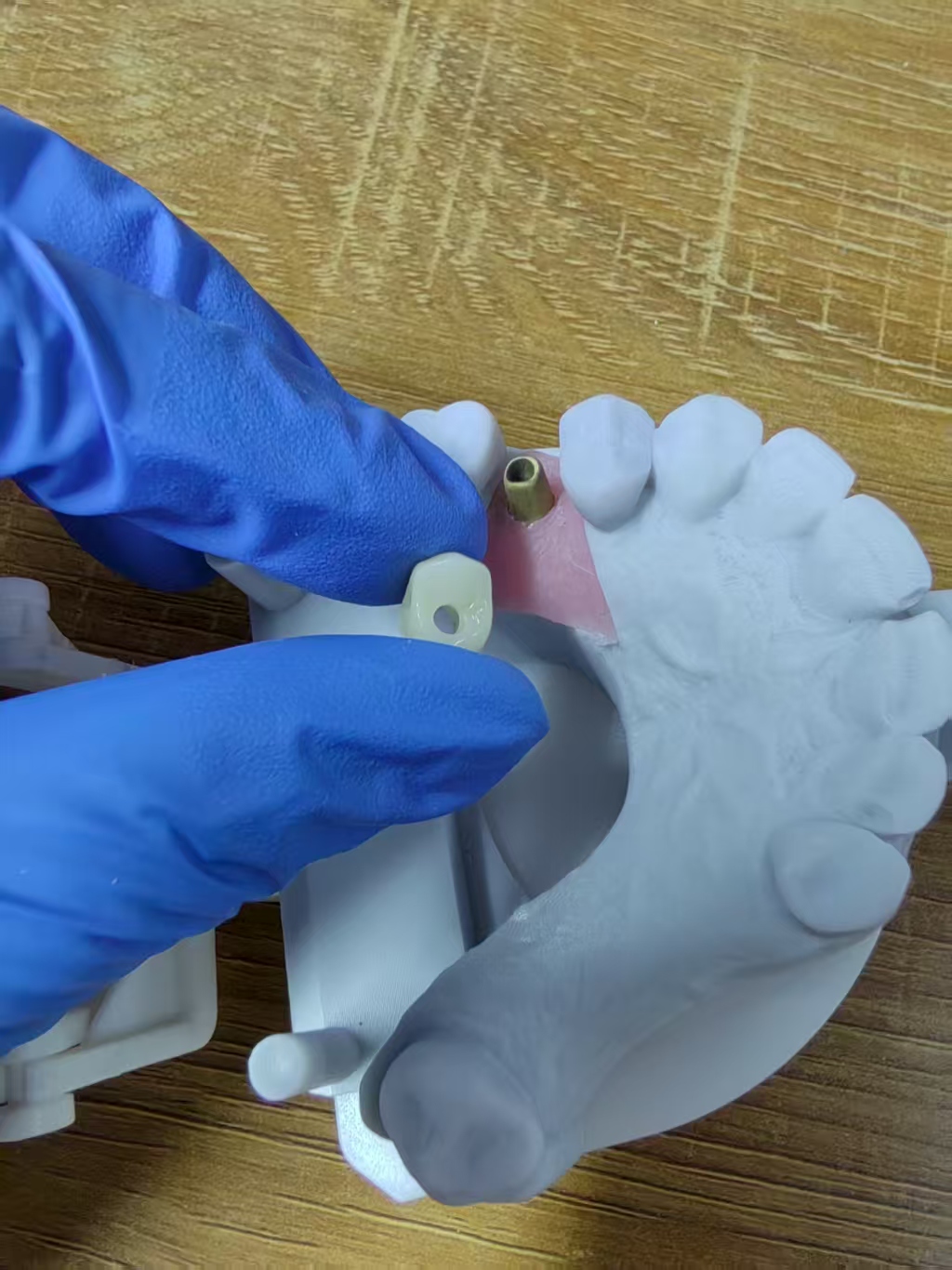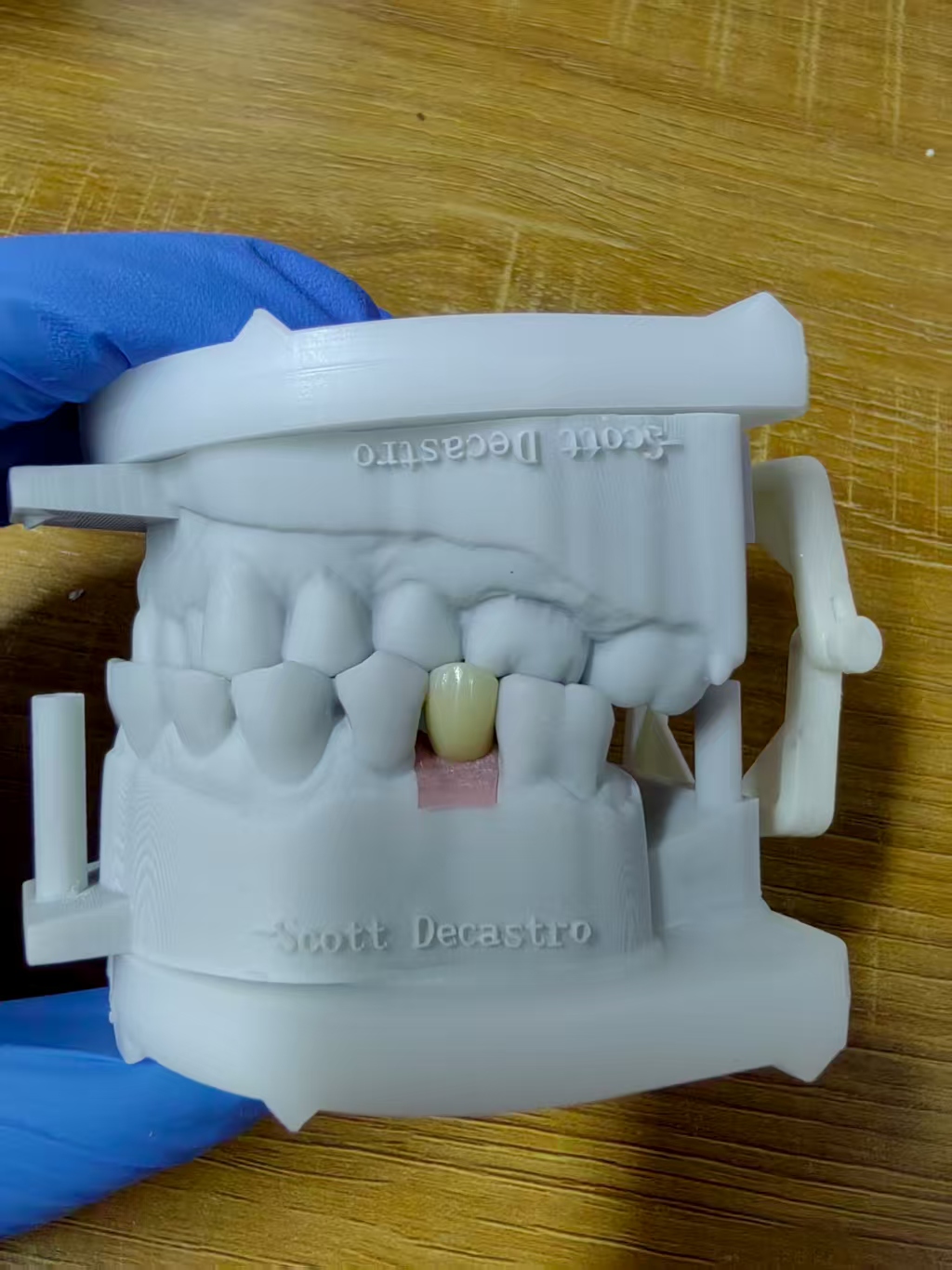Products Description
At Bluesky dental lab, we offer three distinct implant crown retention methods to address diverse clinical scenarios and patient requirements.

Screwmentable
- Hybrid Seating Advantages – Two-stage process allows abutment verification first, then independent crown adjustment for optimal contacts and occlusion, like traditional crown and bridge procedures
- Eliminates Intraoral Cement – Extraoral cementation removes cement from the oral environment while maintaining a precise crown-to-abutment connection
- Superior Retrievability – Maintains screw-retained benefits for easy removal and maintenance while achieving cement-like precision in seating
- Optimal Fit Verification – Abutment can be seated and confirmed for perfect implant connection before crown placement, ensuring passive fit and positive seating
- Enhanced Clinical Control – Allows fine-tuning of contacts and occlusion with the same ease as cement-retained crowns while avoiding cement cleanup challenges
Overview
The choice between screw-retained and cement-retained restorations depends on specific clinical factors, including implant positioning, available restorative space, aesthetic demands, and retrievability considerations. Both retention methods have similar complication rates of 3-5%, but each has distinct advantages for different clinical scenarios.
When to Use Cement-Retained Implants
Choose cement-retained restorations when working in high-aesthetic anterior cases where implant angulation would place the screw access hole on the facial surface, creating cosmetic compromise, or when maximum esthetic demands require seamless appearance. Cement-retained cases require careful cement cleanup to prevent bacterial colonization and tissue inflammation that can jeopardize implant success.
When to Use Screw-Retained Implants
Select screw-retained restorations when implant positioning allows the access channel to exit through the cingulum anteriorly or central groove posteriorly, when restorative space is limited (requiring less space than cement-retained options), or when retrievability is important for future maintenance and repairs. Screw-retained options are advantageous in posterior applications and eliminate the risk of residual cement complications that can lead to peri-implantitis and implant failure.
When to Use Screwmentable Crowns
Choose screwmentable crowns when you need precise seating control and occlusal adjustment capabilities of cement-retained restorations while maintaining the retrievability and hygiene benefits of screw retention. This hybrid approach is ideal for complex bite relationships, challenging implant angulation, or when you need to verify perfect abutment fit before crown placement, all while avoiding intraoral cement complications and their associated risks.







